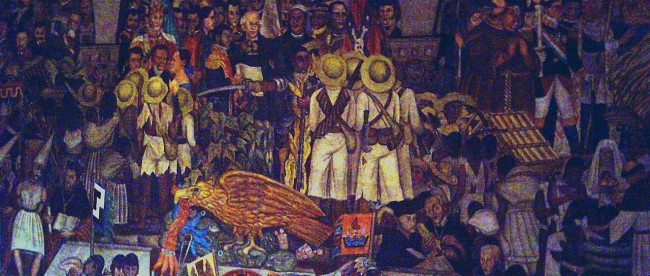The Mexican Art Tax

The economy of high-end art is a strange one. If you’re a moderately successful professional artist, maybe you sell five paintings a year — does that bring in enough money to pay the bills? And even if it does, those works are going into private collections, meaning that museums end up without much contemporary art. And there’s another problem, too: the government is going to want its cut from your earnings, in the form of taxes — a tough burden for an artist who is already struggling to make ends meet.
The callous solution to all of this — minus the museum part, at least — is for the would-be Michelangelo to get a so-called “real job.” But Mexico takes another approach, and it’s one that solves the museum’s problems, too. In Mexico, if you’re an artist, you can pay your taxes with your art instead of cash.
The system, called “Pago en Especie” or “in-kind payment” is pretty simple. To participate, one needs to provide Mexico’s Tax Administration Service (for American readers, that’s the equivalent of the IRS) with a sample of one’s work to be juried, and evidence that you’ve sold works in the past. (José San Cristóbal Larrea, director of the government’s Cultural Promotion and National Heritage Office, told the U.S. press that “a 10-member jury of artists ensures that no one tries to unload junk.”) If accepted into the program — and somewhere between 500 and 1,000 artists registered, as of 2014 — these taxpayers now have the option of forfeiting some of their artwork in lieu of paying taxes. Dollars and pesos never even enter into the equation; if an artist sells five or fewer pieces in a given year, he or she needs to “pay” an additional one to the government or to a museum; for more than five sold, how many pieces an artist has to give up is determined by a sliding scale which caps at six pieces per year.
This unique tax program began in 1957 or thereabouts; because it did not become official until 1975, the actual origins are somewhat unclear. The accepted story: In 1957, David Alfaro Siqueiros, who Fusion calls a “famous muralist and Stalinist radical who attempted to assassinate communist revolutionary Leon Trotsky,” got into an argument with the taxing administration. A friend of Siqueiros’ was about to go to prison for failing to pay taxes, and Siqueiros argued that “the government should find a way of reaching an agreement with creative minds who lacked cash,” again per Fusion. The Christian Science Monitor reports that it was Siqueiros who proposed that artists be able to pay their taxes in art, not pesos.
And at least one local taxing agency agreed. For the next 18 years, many artists took advantage of this informal program, including famed muralist Diego Rivera; the CS Monitor reports that the works obtained through Pago en Especie contain three of his paintings, “an accomplishment, given that he was on his deathbed the year the program was founded.” In 1975, though, the program became a formal one and is now part of the tax code.
Artists can’t just give up any piece of work, either; only visual art — paintings, photographs, etc. — are allowed, and each piece is juried to make sure it is worth about the same as the other ones sold. At times, this causes a problem; as USA Today reported in 2010, “a few well-known artists have had their contributions rejected in recent years.” But in general, it’s not a problem. Per the Atlantic, as of 2014, Pago en Especie has resulted in a “public collection of nearly 7,000 paintings, sculptures, and graphics accepted as tax payments from some of Mexico’s best-known artists.”
Bonus fact: The United Kingdom has a similar program as the above, but it’s even more lax — you can donate art instead of paying your taxes, and you don’t even need to be an artist. Per Arts Council England, the scheme, called Acceptance in Lieu, any taxpayer can “transfer important works of art and heritage objects into public ownership” as a way to avoid inheritance tax. The taxpayer is given tax relief equal to the full value of the item while the state gets some pretty cool artifacts. As Forbes notes, “all sorts of things have followed this path, including original manuscripts handwritten by John Lennon.”
From the Archives: The Art of War: Why American Cold War-era art was of national importance.
Related: Modern Art, the board game.
